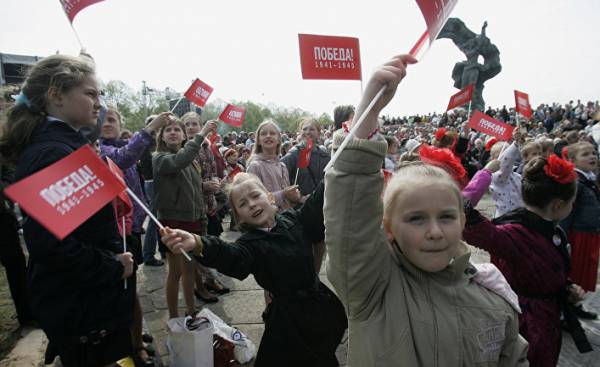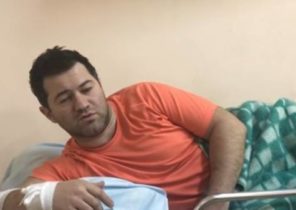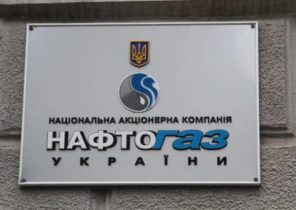
The question of national communities is often discussed in the context of the tension that occurs in society. The basis of this voltage is often mistrust. Today, conditionally speaking, “podrumskom the world” — this is particularly true because of the events of 2014 continue to cast a shadow on our lives and, apparently, will do for a long time.
The seizure of Crimea (not to mention subsequent events), traumatized not only Ukraine. The waves from these events are dispersed throughout the former Soviet space, resonating at times in unexpected ways. It can be argued that in our region now, each with its own “postkrymsky syndrome”.
If we analyze this syndrome in the Baltic States, the main feature is its distrust projected on the national community. This is not to say that the distrust that has arisen is purely subjective. Let’s not forget that we are talking about “postkrymsky syndrome”.
For anybody not a secret that in the operation to seize the Crimea, which was personally chaired by the President of Russia Vladimir Putin (he boasts of it under the camera in the film “Crimea. The way Home”) theme of the Russian national minority has been used comprehensive. Russian Crimea have become the object of cynical geopolitical manipulation — artificial justification for actions that violate international law.
Crimean history has created several sustainable models that today are generally called “hybrid war”. One of these models — the operation to capture the territory, relying on a (relatively) layer of the disloyal society of the country in respect of which it is planned aggression. Nothing surprising in the fact that today the state who feel a potential threat to their security, from time to time referred to try the model for yourself, and make defensive plans.
In the Baltic States, do not feed special illusions about the Kremlin’s peace, after the Crimean events the center of attention was a local ethnic communities — primarily we are talking about Russian-speaking part of national minorities. Of course, in this context, it is impossible to talk about all the Baltic States generally.
In the same Latvia and Estonia, the topic of national minorities has never actually disappeared from the agenda, since it is directly connected with the problem of non-citizens. In Lithuania, the situation was somewhat different in the recent issue of national communities occupied a secondary or even tertiary place in the political discourse of the country. There was a political consensus that this question is essentially no. However, the Crimea has changed the view on many things.
In the newly emerging interest in ethnic communities is not difficult to see negative shades. Sometimes it just boils down to who and how to welcome the “little green men”, they appear in Narva, Daugavpils and Visaginas. Of particular concern is expressed in connection with the fact that some representatives of Russian-speaking communities actually live in “the information space of the Kremlin,” which, to put it mildly, does not strengthen their relationship with the countries of residence.
In other words, all of a sudden it turned out that the issue of integration of national communities is not only closed, but is now one of the most exciting ones. For example, in Lithuania after the events of 2014 were quick to recover, the Department for national minorities, which was closed in a rather quiet 2010. Particularly acute distrust of ethnic communities was felt immediately after the Crimean events.
Today the passion has somewhat subsided, but this does not mean that the issue has lost its relevance. The resulting distrust is not conducive to stability, especially given the loudly voiced stories about children who went from the Lithuanian Russian-language schools in the so-called Patriotic camp in Russia, or special attention from the state security Department to vishinski the airsofters.
Another serious problem that is not particularly pay attention to is the fact that now, even in those cases where the discussion of the national communities is constructive, the representatives of national minorities implicitly separate out, isolate from the rest of society category. Why is this happening in Latvia and Estonia in its own way clear. The existing divide between citizens and “noncitizens” to overcome extremely difficult. In such circumstances, it is difficult to talk about the formation of an integral civil society, which is the main solution of the problem and the basis for overcoming fear and mistrust.
Lithuania, in this case, there is a significant advantage, but it disappears when the conversation is conducted in terms of “us” and “them”. The fundamental idea of civil society is that all residents are treated as equal citizens interested in the security and prosperity of his country, which, in turn, cares about them. Of course, it looks like the perfect formula, which can be called democratic utopia. However, this does not prevent the majority of modern developed countries to designate civil society as the cornerstone of the state system.
In other words, overcoming “postkrymsky syndrome” lies in the process the most complete integration of national communities into civil society. It should be comprehensive and mutual process based on the goodwill of the state and conditional of the majority on the one hand and goodwill of the minorities on the other. It is necessary to strengthen the understanding that the issues of security, social protection, personal and social freedoms are equally important for all. The awareness of this — rather obvious — things you should practice as a whole and not to focus on a particular group.
Ideas about civil society are equivalent is relevant for minority and for majority. Also pretty sad that the issue of national minorities Lithuania has not yet managed to enlist the support of Poland. Because of this, a paradoxical situation in which the Polish community also falls under the magnifying glass of mistrust. While Lithuania and Poland are in the same geopolitical paradigm, the basis of which the European Union and NATO.
The principle of a supranational pan-European (EU) civil society could be a good panacea here. However, in Lithuania this concept is not working. It largely broke on a crusade against foreign-language signs, dubbed the street names in the Šalčininkai district, and other minor irritants. However, even in the current situation, the stress associated with special attention to ethnic communities, a few are exaggerated. This is indirectly evidenced by the example of the same Ukraine.
When Russian propaganda began to play the card of anti-Semitism in the coverage of events in Kiev on Maidan immediately there was a Jewish hundred. When the red flowers of the “Russian spring” blossomed in the Donbass — Ukraine, contrary to the expectations of the Kremlin, has not collapsed in the Western and Eastern part, and Vice versa — has become much more unified than it was before. To fight for their Ukrainian — land went not only ethnic Ukrainians, but also representatives of other nationalities.
Note that according to a sociological study conducted in the summer of last year, two-thirds of the representatives of the Russian and Polish national communities prepared to defend Lithuania in case of military threat. The study also revealed that to protect the country better prepared for those members of national minorities who have successfully integrated into society. So, which side do not look at integration in the civil Foundation is the best answer to all fears. However, in a democratic society is a truism.






